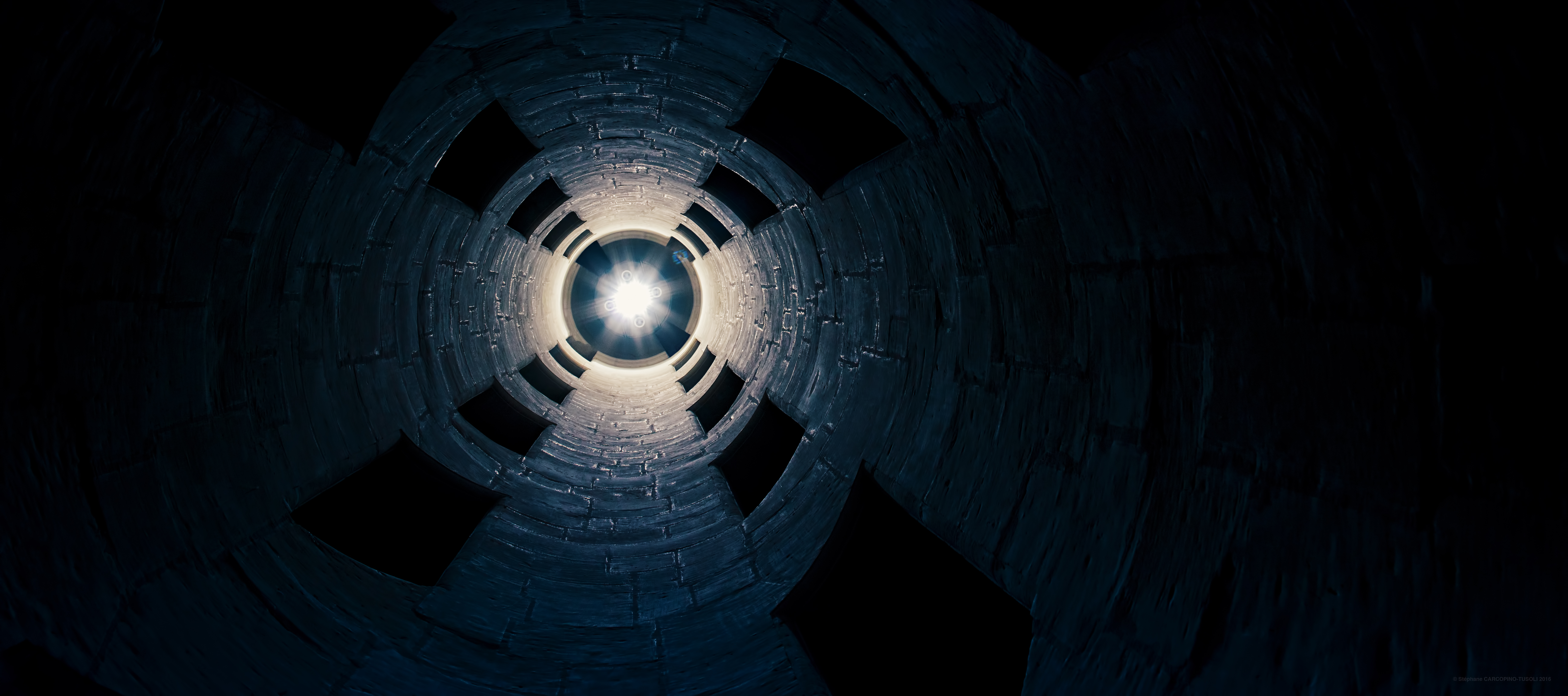-
Posts
30 -
Joined
-
Last visited
Reputation Activity
-
 tusoli5 got a reaction from jonpais in Panasonic GH4 user films, tests, reviews and opinions
tusoli5 got a reaction from jonpais in Panasonic GH4 user films, tests, reviews and opinions
@jonpais
both picture styles developped by canon and/or users allow you to go way further in your color correction in post production. It allows you to adjust your scene and angles to your color desire for post production and thus gives you more color integrity from one shot to another because you see it work while doing it.
That is what can be as close as professional filmaking. The aptitude to put a log (or a lut for canon Raw) in the camera is even much more efficient. Without it you might have a bit too much differences from one shot another and will loose the few dynamic range you have left from H264 to adjust your shots before laying your real color correction. Not so many projects require heavy color correction for tv or shows but a filmick look for cinema, tv commercials or serials is always kind of heavy. That's why a good neutral style (for example) helps you to get back the more dynamic range from what your camera is capable of. This is a thing you can achieve, on a lot of cameras, but the few DSLRs that can use log, lut or color profiles precisely made it efficient (and not just pushing down contrast and gama in the camera's menu), these few cameras really help to get the most neutral preset and effective to edit color in your movie and with another picture style make you preview in some test what is possible to achieve with their files and what will fall appart in post production.
So, yes the color correction stays in post production, but you can concieve it before on the most efficient way with this tool and most of the time you can even tweak your picture to get the most your sensor could get for it to be done well.
And I think that's a pitty that such nice sensors as Panasonic can't benefit from similar tools, as, for me, since the gh2, they have been on top of what DSLRs could expect for home-made filmmaking with real ambitions.
That's much more a frustrating comparision point than a real flaw, I admit it, a flaw would be it not working or not concievable with these cameras. The frustration comes when you clearly see that panasonic, nikon, etc could provide such a color profile tool, but they simply don't. And taking pictures is about color, isn't it?
Blackmagic, is much more a personnal experience for me, if you like them, then that's good but until now my experience with them show that they are not reliable enough to prepare profesionnal projects on their products.
Blackmagic are good cameras nearly professional broadcasting tools for 1/5 the price, at least, wich is fantastic when they work fine, but their distibution was so hazardous since the beginning, their distributors spent so much money taking the orders for a long period of waiting line, it did put so many people in danger financially for small structures (distributors and projects waiting to get it, just remember how they promised delivery dates for some pre ordering people that never touched them in time), this really has been the weirdest thing I have ever seen since a long time in this domain. I waited to be able to get one for one year and I have been working with their other products for post production on many times, if it works that's terrific, if it crashes you're out alone in the desert facing your black magic equipment. The after sale service is simply not ready yet to deal with their amount of buyers. That's why for me blackmagic, until now cannot be taken seriously, their design and effectivness are great but only as long as they work. When they don't, compare to panasonic, sony, nikon, canon, you're done.
-
 tusoli5 got a reaction from dahlfors in 54 mentions of video vs 32 of photos in Nikon D810 press release
tusoli5 got a reaction from dahlfors in 54 mentions of video vs 32 of photos in Nikon D810 press release
Nikon really intends to make a 4k dslr in a while, for now they are simply following their usual shedule of updating their already released cameras as they did since D100, D1 until now.
Usually for nikon you have the new camera and its "s" or .100 or .300 or .10 etc, and then you get the real new deal after.
Working with a D800 and a Hacked gh2 has been really fun for me and it produces absolut mint images when you know how to use them in shooting and in post production.
I don't feel the urge, with such a good camera to switch to the newer or the last 4k. My clients are always blown away by everything produced on this camera. And for stills, I can say that it has been a real breakthrough that allowed me not to deal anymore with hasselblad for fashion shoots and its been a real relief in terms of investments.
Furthermore, the 24mb/s codec provided on the d800 amazed me as I could produce as good images as my hacked gh2 in 90mb/s //100mb/s and they allow me to go far more deep in color corrections than gh2 and 5DmkII allowed me (Hacked and magic lanterned - not talking about raw).
Needless to say that the last nikon hack of 60mb/s for the D800 really does the trick and allows to avoid all ninja external recorders and is a really light solution for heavy shooting, I have been processing some tests and edit that really makes a good 1080P camera.
My advice is, after you've done your edit cut, encode your video files on DNXHD 350 and then post prod them as you want you'll really have something quite heavy looking to deal with that will compare easilly to more "professionnal" video solutions.
For example, a trailer for a photo shoot I did for ELLE:
Vimeo compression makes it a bit blocky, but it does the same with every good quality pictures lately (gh4, 5dMIII raw, BMP), like if there were too much quality to handle for the compression.
For moire, the video filter to put inside that corrects it really works like magic, it is expensive (around 300€), but brings you an image so beautifull and a flawless free - of - moire picture that I find it essential to deal with, while preserving the mind blowing quality of this 24mb/s h264 video files.
Putting it to shoot video really allows me to separate the video from photo situations for my clients as they understand that while shooting video the camera has been changed so they can't ask for one little photo while making videos.
And yet, I never felt the need to psuh forward details in post prod on this camera. Not so many can say that.
;-)
So, yes, if you are a professional and have no d800, d600, no 5DMkIII yet, this D810 can really be a great deal for you on both stills and video.
-
 tusoli5 reacted to Wulf in 54 mentions of video vs 32 of photos in Nikon D810 press release
tusoli5 reacted to Wulf in 54 mentions of video vs 32 of photos in Nikon D810 press release
thx for sharing your work!
some of the very best out of a nikon yet! so it is possible
-
 tusoli5 got a reaction from jonpais in 54 mentions of video vs 32 of photos in Nikon D810 press release
tusoli5 got a reaction from jonpais in 54 mentions of video vs 32 of photos in Nikon D810 press release
Nikon really intends to make a 4k dslr in a while, for now they are simply following their usual shedule of updating their already released cameras as they did since D100, D1 until now.
Usually for nikon you have the new camera and its "s" or .100 or .300 or .10 etc, and then you get the real new deal after.
Working with a D800 and a Hacked gh2 has been really fun for me and it produces absolut mint images when you know how to use them in shooting and in post production.
I don't feel the urge, with such a good camera to switch to the newer or the last 4k. My clients are always blown away by everything produced on this camera. And for stills, I can say that it has been a real breakthrough that allowed me not to deal anymore with hasselblad for fashion shoots and its been a real relief in terms of investments.
Furthermore, the 24mb/s codec provided on the d800 amazed me as I could produce as good images as my hacked gh2 in 90mb/s //100mb/s and they allow me to go far more deep in color corrections than gh2 and 5DmkII allowed me (Hacked and magic lanterned - not talking about raw).
Needless to say that the last nikon hack of 60mb/s for the D800 really does the trick and allows to avoid all ninja external recorders and is a really light solution for heavy shooting, I have been processing some tests and edit that really makes a good 1080P camera.
My advice is, after you've done your edit cut, encode your video files on DNXHD 350 and then post prod them as you want you'll really have something quite heavy looking to deal with that will compare easilly to more "professionnal" video solutions.
For example, a trailer for a photo shoot I did for ELLE:
Vimeo compression makes it a bit blocky, but it does the same with every good quality pictures lately (gh4, 5dMIII raw, BMP), like if there were too much quality to handle for the compression.
For moire, the video filter to put inside that corrects it really works like magic, it is expensive (around 300€), but brings you an image so beautifull and a flawless free - of - moire picture that I find it essential to deal with, while preserving the mind blowing quality of this 24mb/s h264 video files.
Putting it to shoot video really allows me to separate the video from photo situations for my clients as they understand that while shooting video the camera has been changed so they can't ask for one little photo while making videos.
And yet, I never felt the need to psuh forward details in post prod on this camera. Not so many can say that.
;-)
So, yes, if you are a professional and have no d800, d600, no 5DMkIII yet, this D810 can really be a great deal for you on both stills and video.


.jpg.9b121eab27f20cdf47d248cffc4023a3.thumb.jpg.5cef7b23bb79ad7dfd1ef0358c7a417f.jpg)

